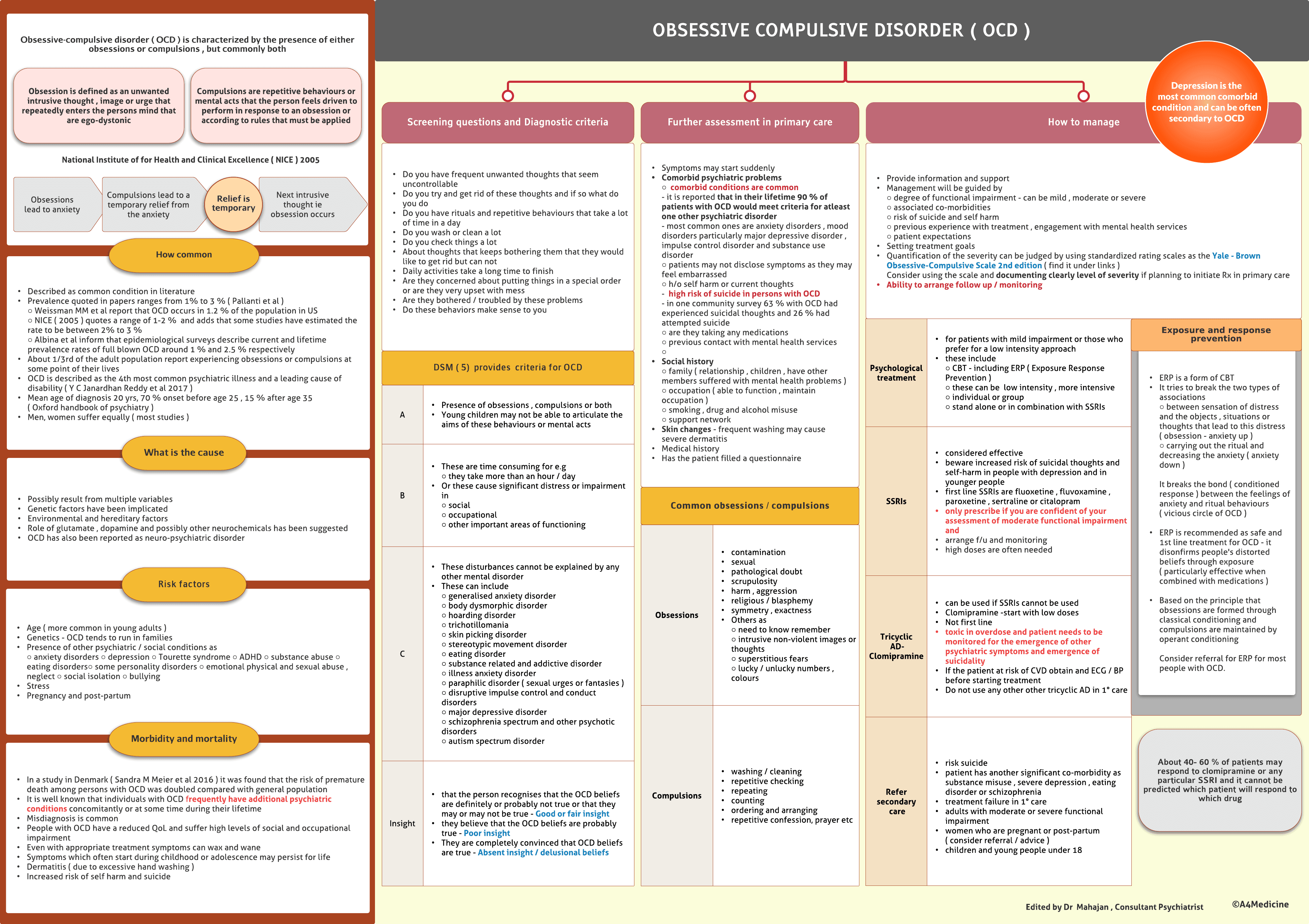Download A4Medicine Mobile App
Empower Your RCGP AKT Journey: Master the MCQs with Us!

Obsessive-compulsive disorder ( OCD ) is characterized by the presence of either obsessions or compulsions , but commonly both
Obsession is defined as an unwanted intrusive thought , image or urge that repeatedly enters the persons mind that are ego-dystonic
Compulsions are repetitive behaviours or mental acts that the person feels driven to perform in response to an obsession or according to rules that must be applied
How common- Described as common condition in literature Prevalence quoted in papers ranges from 1% to 3 % ( Pallanti et al )○ Weissman MM et al report that OCD occurs in 1.2 % of the population in US○ NICE ( 2005 ) quotes a range of 1-2 % and adds that some studies have estimated the rate to be between 2% to 3 %○ Albina et al inform that epidemiological surveys describe current and lifetime prevalence rates of full blown OCD around 1 % and 2.5 % respectively About 1/3rd of the adult population report experiencing obsessions or compulsions at some point of their lives OCD is described as the 4th most common psychiatric illness and a leading cause of disability ( Y C Janardhan Reddy et al 2017 ) Mean age...
Try our Free Plan to get the full article.